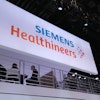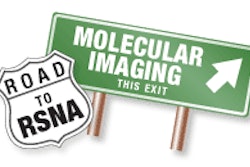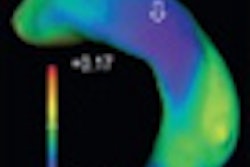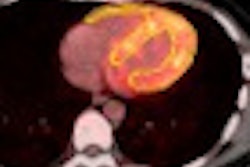Thursday, December 2 | 11:20 a.m.-11:30 a.m. | SSQ15-06 | Room S505AB
German researchers have found that FDG-PET/CT may contribute to the diagnosis of tuberculosis-induced intraocular inflammation, especially in the case of latent and asymptomatic infection.The study, led by Christina Pfannenberg, MD, associate professor in the department of diagnostic and interventional radiology at Eberhard Karls University in Tübingen, consisted of extensive clinical workup on 20 patients before FDG-PET/CT scans. The patients, who had different forms of uveitis but no systemic signs of tuberculosis, received chest x-ray and/or CT as part of the workup.
PET/CT images were evaluated for the presence, size, and FDG uptake of hilar and mediastinal lymph nodes and pulmonary lesions. If technically possible, PET/CT-guided transbronchial biopsy of suspicious lymph nodes also was performed.
In nine patients, PET/CT detected increased FDG uptake in normal-sized or slightly enlarged mediastinal or hilar lymph nodes. In two of the nine patients, mycobacterium tuberculosis was detected in culture after PET/CT-guided lymph node biopsy.
Hilar and mediastinal lymph nodes without FDG uptake were found in seven patients, while four patients showed additional calcified granulomas in the lung. FDG-PET/CT revealed no abnormalities in four patients.
Based on the results, Pfannenberg and colleagues concluded that FDG-PET/CT was helpful in identifying metabolically active lymph nodes in patients with uveitis and helps establish a definitive diagnosis and follow-up therapy.




















